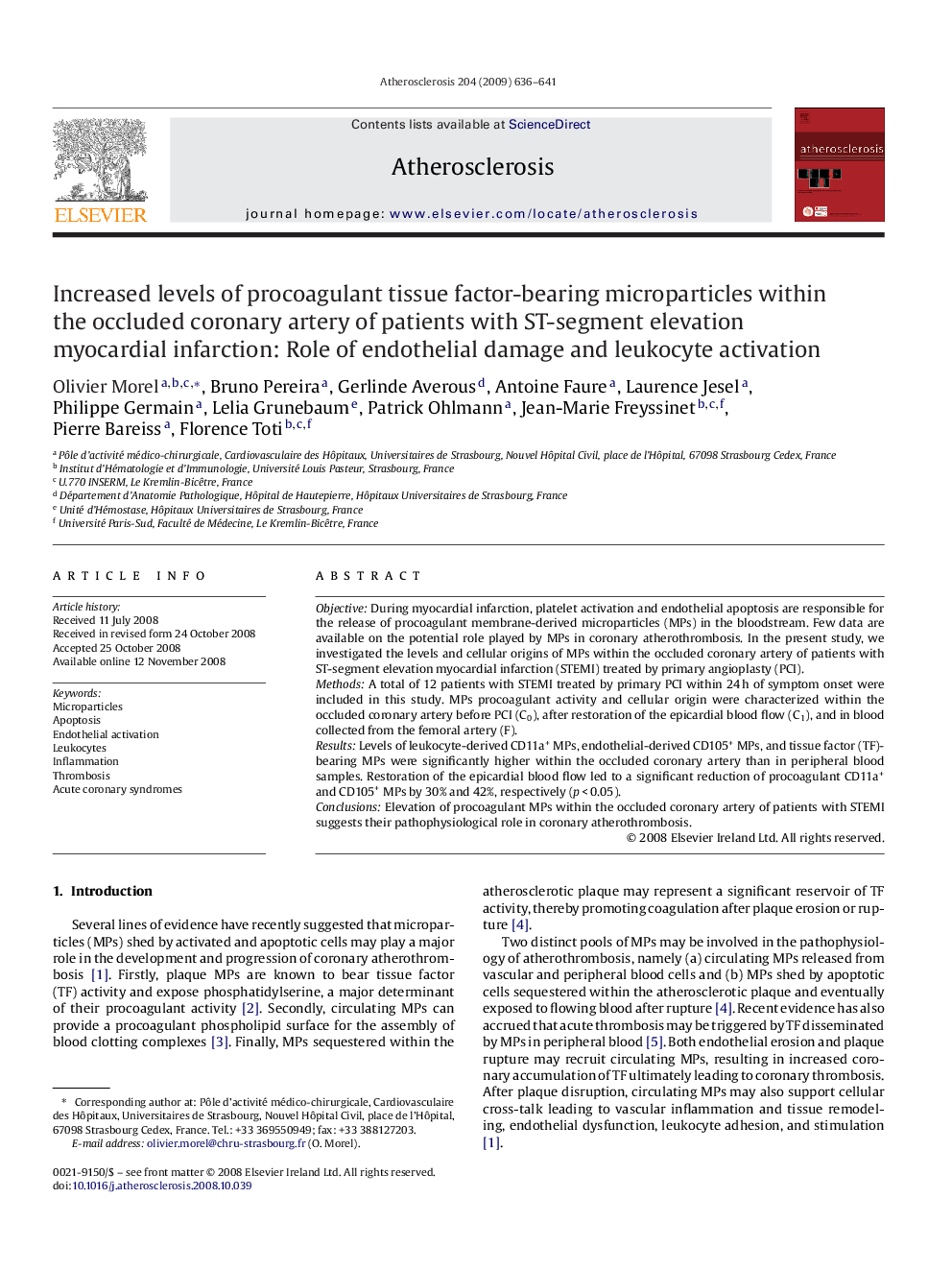| Article ID | Journal | Published Year | Pages | File Type |
|---|---|---|---|---|
| 2893514 | Atherosclerosis | 2009 | 6 Pages |
ObjectiveDuring myocardial infarction, platelet activation and endothelial apoptosis are responsible for the release of procoagulant membrane-derived microparticles (MPs) in the bloodstream. Few data are available on the potential role played by MPs in coronary atherothrombosis. In the present study, we investigated the levels and cellular origins of MPs within the occluded coronary artery of patients with ST-segment elevation myocardial infarction (STEMI) treated by primary angioplasty (PCI).MethodsA total of 12 patients with STEMI treated by primary PCI within 24 h of symptom onset were included in this study. MPs procoagulant activity and cellular origin were characterized within the occluded coronary artery before PCI (C0), after restoration of the epicardial blood flow (C1), and in blood collected from the femoral artery (F).ResultsLevels of leukocyte-derived CD11a+ MPs, endothelial-derived CD105+ MPs, and tissue factor (TF)-bearing MPs were significantly higher within the occluded coronary artery than in peripheral blood samples. Restoration of the epicardial blood flow led to a significant reduction of procoagulant CD11a+ and CD105+ MPs by 30% and 42%, respectively (p < 0.05).ConclusionsElevation of procoagulant MPs within the occluded coronary artery of patients with STEMI suggests their pathophysiological role in coronary atherothrombosis.
